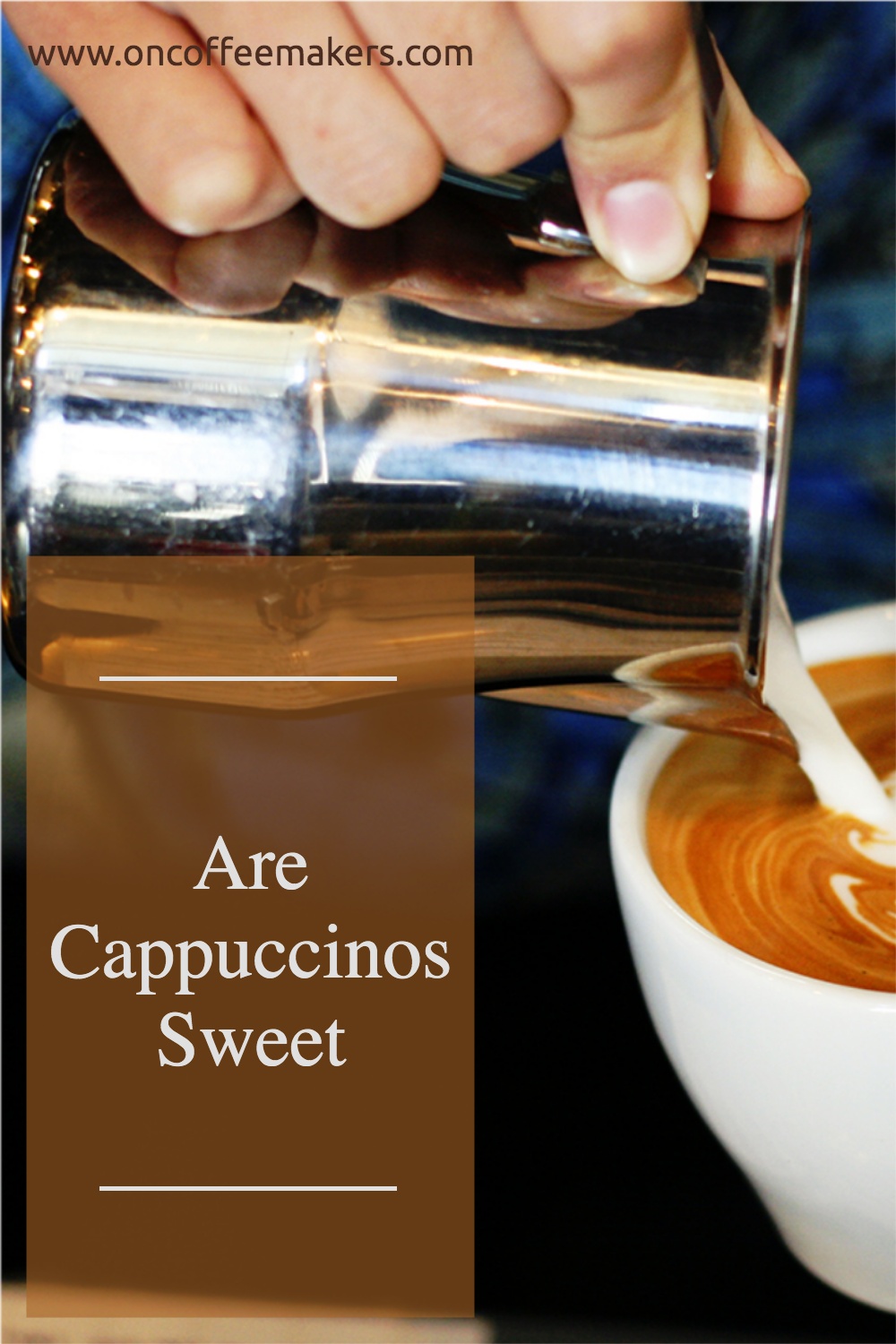Are Cappuccinos Sweet?
Cappuccinos don't have any added sugar. Cappuccinos are sweeter than drip coffee because of the milk's sugar content, which makes them even sweeter. Cappuccinos also have a more savory flavor and a thicker texture.

A cappuccino is made by combining a double espresso shot with milk. Three-thirds espresso, three-thirds hot milk, and three-thirds froth.
Most cappuccinos are sweet since they are made with hot milk and sugar. It's entirely up to you how sweet you want it to be. If you consume a lot of cappuccinos, keep in mind that excessive sugar consumption might lead to weight gain.
Cocoa powder is often sprinkled on top of cappuccinos for added taste and sweetness. As with other popular coffee drinks, cappuccinos have thicker foam and can be enjoyed by spooning the foam out.
- Cappuccino Making Instructions
A cappuccino has three main ingredients and a fourth depending on preference:
Espresso
Steamed Milk
Frothed Milk
Dark Chocolate Powder (depending on preference)
Because the first three ingredients should be roughly equal, you can make a cappuccino with one or two shots of espresso and then match the volume with steamed milk. Finish with a layer of milk foam and, if desired, a sprinkle of chocolate powder.
A cappuccino contains no added sweeteners, aside from the chocolate powder. However, milk accounts for two-thirds of the beverage, and milk contains a significant amount of natural sugar.
The amount of liquid in a cappuccino results in a strong espresso flavor, and the milk foam adds richness and thickness to the overall experience.
A latte, on the other hand, has a two-to-one steamed milk-to-espresso ratio, which means it has significantly more natural sugar, but the espresso flavor is masked a little more, and it's not as thick and creamy.
- Making A Healthy Cappuccino Is Simple When You Follow These Steps.
Traditional cappuccino milk is heavy in calories, or you don't want to drink milk at all. You can experiment with different kinds of milk to find what works best for you and how it tastes when you make a cappuccino.
2 percent milk and fat free milk are also available if you do not wish to consume whole milk. Milk comes in a variety of varieties, but all of them produce foam that is suitable for this purpose. The less fat in the steamed milk, the thinner it will be and how it will taste and feel.
2 percent fat is all you need to make a good cappuccino, but anything less than that will taste like a lousy cup of drip coffee.
The fat and proteins in lactose-free milk allow for a thick and foamy cappuccino even if you are unable to consume dairy products. Choose whole milk or at least 2 percent if you're not sure what you want.
Soy milk is the closest non-dairy substitute to whole milk in terms of protein and fat content, resulting in a foamy cappuccino that isn't too thin. Making a good latte with rice or almond milk, instead of ordinary milk, is an option if you don't want to drink it. However, the lack of protein prevents them from producing the characteristic cappuccino froth.
It's important to experiment with a wide range of brands in order to find the one that works best for you.
If you're not allergic to dairy, I propose that you have a conventional, whole milk cappuccino. Rather than grabbing a second cup of coffee, seek for low-calorie options.
The greatest cappuccino can only be made with full milk. You can't go wrong with a glass of whole milk.
How To Make A Cup Of Instant Coffee
By Douglas
Other Latte Art Questions
How to Steam Milk for Latte Art without Machine?
How to Steam Milk at home for Latte Art?
Other Questions about Coffee
How much does it cost to rent a espresso machine?
Questions not about coffee (but important to coffee)
About US | OCM Profile
OCM (OnCoffeeMakers.com) was started in 2007 with the first webpage about coffee machines. And for a number of years, we focused on helping people find their desired coffee machine (we still are helping folks with that! So, if you are looking for coffee machines for office or restaurants - check out the link).
In 2010, we started getting enquiries on restaurant marketing and we start to help food and beverage brands with their marketing. Below are campaigns and events that we have done over the years:
OCM's campaigns: F&B Marketing Ideas by OCM
OCM's Events: F&B Industry events by or with OCM
Check out this restaurant marketing guide to learn more about the many campaigns and companies we have worked with.
Since then, we have also created many marketing workshops and classes for the F&B industry. Many of these modules are still running in tertiary institutions such as Temasek Polytechnic Skillsfuture Academy and also ITE College East COC classes, below are some snippets of our lectures and workshops:
OCM’s F&B workshops: Food and Beverage Marketing Lectures | Workshops - click to watch classes on customer journey map, JTBD and more.
So, if you are looking for industry practitioners to help you scale your coffee or F&B businesses, do drop us a message or book an appointment. Do also check out our various social media platforms on regular F&B and coffee market updates:
For regular coffee (F&B) related videos: OCM Youtube
For Daily Coffee Inspiration (fun coffee content): OCM IG
For insights into the coffee (F&B) industry: OCM LinkedIN
PS: For the coffee lovers, we continue to share coffee articles (and videos) and have also started a free coffee class section (with free online coffee training supported by coffee partners).